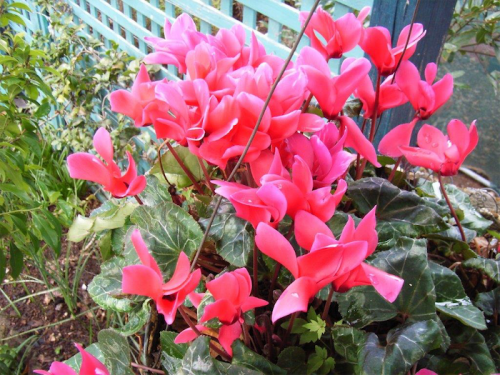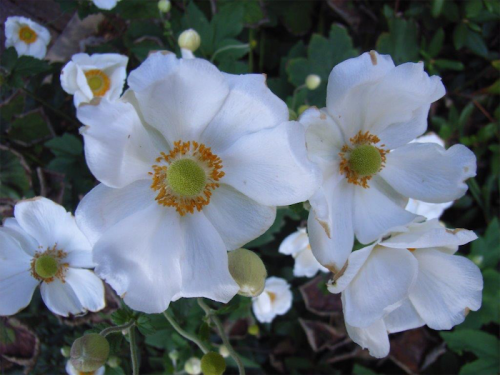WRITER Emily Bronte wrote of the common bluebell that “a fine and subtle spirit dwells in every flower”.

While readily available here, a word of warning; the English bluebell (Hyacinthoides non-scripta) spreads like wildfire and could be a menace for the small garden.
It has taken me two years of constantly digging up bulbs as soon as they appear… and still they come.
For the large garden with shady areas this is not a problem and can present a magnificent carpet of waving blue flowers. Many visitors to the now-sold Kennerton Green gardens in Mittagong may recall seeing the silver birch wood underplanted with bluebells.

GARDEN centres are awash with the wonderful Cyclamen persica, a favourite flower of florists. Sold mainly potted as an indoor plant, most people throw them out after flowering. However, by planting it in a shady spot in the garden under, say, a deciduous tree, it will die down in summer, only to reappear at this time.
The photo of cyclamen in a hanging basket is in our garden that’s now at least 10 years old. It’s in flower and has never been repotted. We’ve fed it regularly in the growing season with organic Maxicrop Seaweed Plant nutrient. Note the basket liner of foam carpet under-felt, which also has never been changed in the lifetime of the plant.
ONE last word on this lovely plant, I must mention a beautiful dwarf soft pink variety growing to less than 10cm high is Cyclamen hederifolium. From the seemingly bare earth and through the mulch, the tiny petals appear before the leaves. As the flowers die down, the ivy-like leaves with a marbled effect appear to provide a solid ground cover until they finally disappear in mid-winter until autumn next year; nature is truly amazing!

FOR a complete contrast in colour and texture at this time of year is Anemone hupehensis x japonica or Japanese windflower. Despite the common name, it originates in China.
Initially recorded by Swedish naturalist Carl Peter Thunberg (1743-1828), the plant was first introduced into England by plant hunter Robert Fortune, who sent specimens to the Horticultural Society of London in 1844. Despite this, it doesn’t appear in cultivation in China today. The delicate pink and white flowers, on tall stalks up to 40cm tall, wave enticingly in the wind.
Some classify it as a weed and, like bluebells, once it’s in the garden it’s hard to get rid of. However, it is only a problem if you let it be one; I simply pull the excess plants out, roots and all, after flowering.
Jottings…
- After leaf fall on fruit trees, spray with lime sulphur for a good pest clean-up.
- Disconnect plastic garden timers from taps before frost destroys them.
- Move potted citrus under cover out of frost. Cover in-ground citrus with hessian or 90 per cent rated shade cloth.
- Plant lilium bulbs now and any other bulbs around the place.
Who can be trusted?
In a world of spin and confusion, there’s never been a more important time to support independent journalism in Canberra.
If you trust our work online and want to enforce the power of independent voices, I invite you to make a small contribution.
Every dollar of support is invested back into our journalism to help keep citynews.com.au strong and free.
Thank you,
Ian Meikle, editor




Leave a Reply